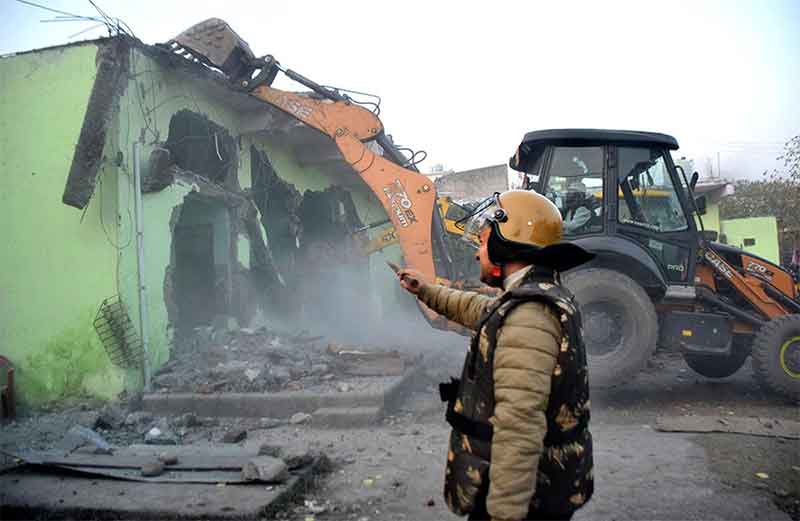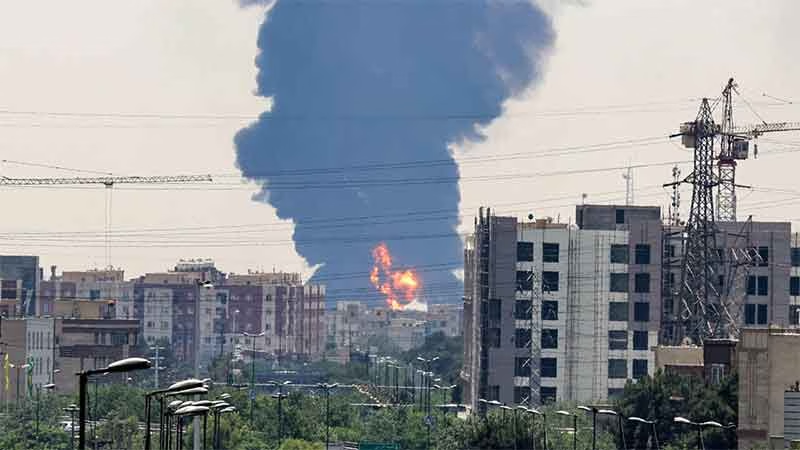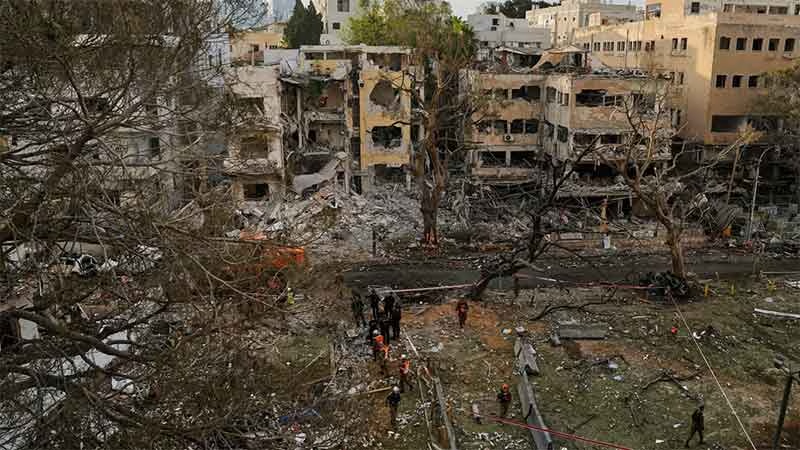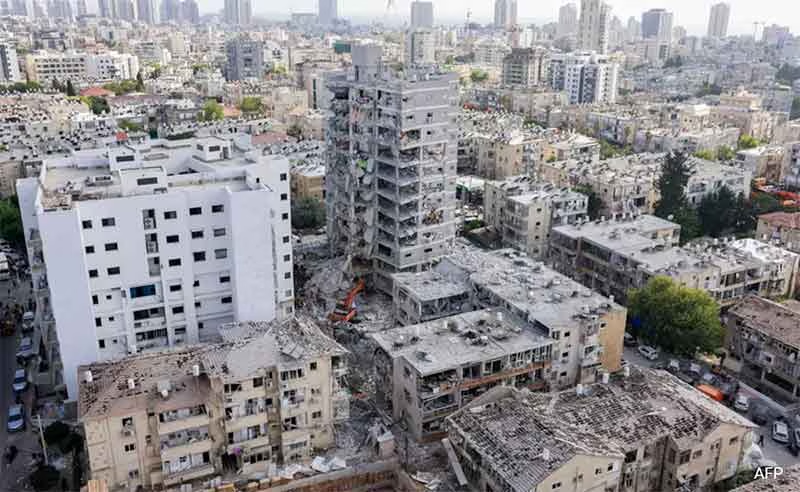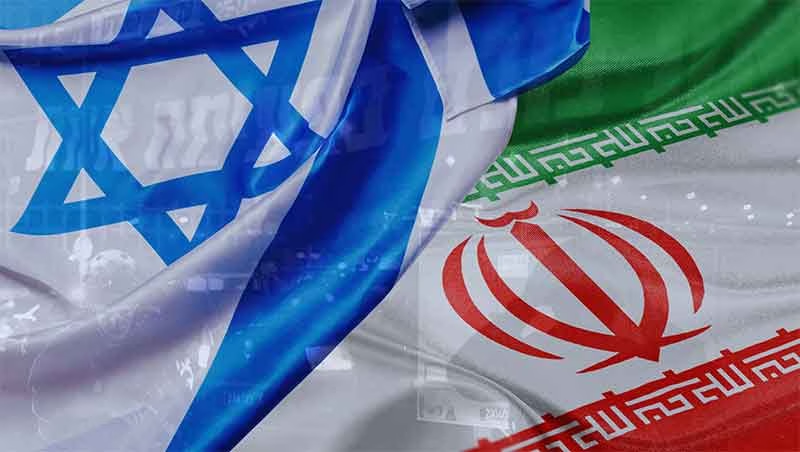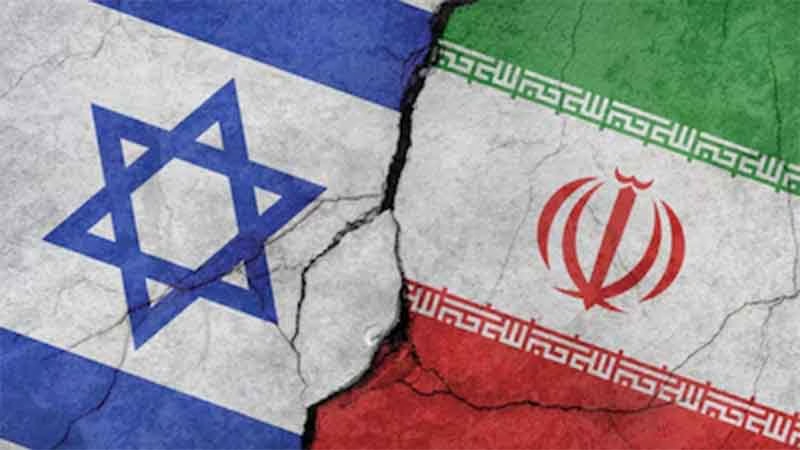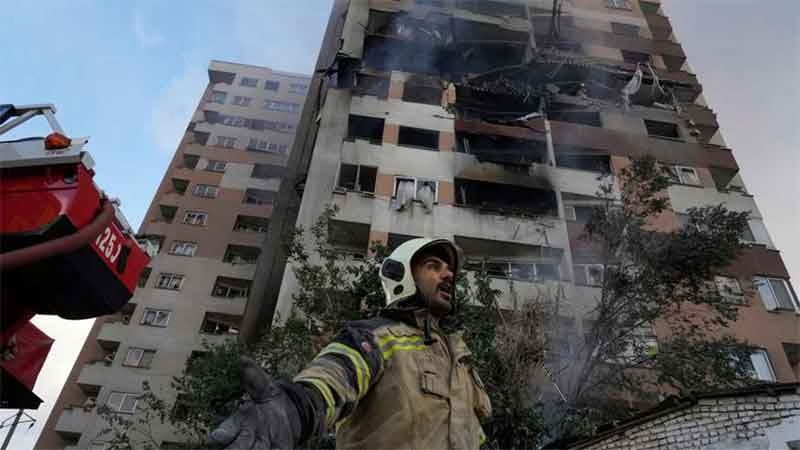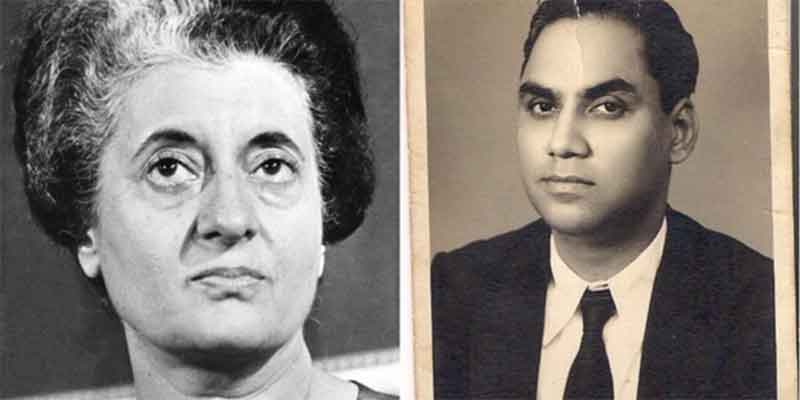
Prime Minister Indira Gandhi’s election was set aside by the Allahabad High Court’s Justice Jagmohan Lal Sinha on June 12. It was on this day in 1975 that the Court passed a judgment holding that the then PM was guilty of electoral malpractices, and disqualified her from holding public office for 6 years. It led to the imposition of Emergency on 1975 June 26 in the country for about two years. This article recalls both the events fifty years later.
The hearing of the Indira Gandhi case (Indira Gandhi v. Raj Narain and Anr.; 1975 AIR 865, 1975 SCR (3) 333.) had taken four years and the judgement was reserved on 23.05.1975.
Congress (R), which was the break-away faction of the Congress party floated by Indira Gandhi after her expulsion from the party in 1969, won a landslide victory securing 352 out of the 518 seats in the Loksabha. She won from the Rae Bareli constituency in UP, from where Rahul Gandhi is elected now, defeating her nearest rival Raj Narain, the Samyukta Socialist Party candidate, by 1,10,000 votes. Raj Narain had challenged Gandhi’s election before the Allahabad High Court by filing an election petition.
Justice Sinha allowed the petition accusing PM Indira Gandhi of “corrupt practices” in the 1971 Lok Sabha election contest.
Out of the long list of allegations raised against Gandhi by her rival Raj Narain, most were turned down by the High Court.
“ One of the most crucial findings against Gandhi was that her election agent Yashpal Kapur, the District Magistrate of Rae Bareli, the Superintendent of Police of Rae Bareli and the Home Secretary of Uttar Pradesh government arranged for rostrums, loudspeakers and barricades to be set up and for members of the police force to be posted in connection with her election tour on February 1 and February 25, 1971…This, the High Court held, amounts to a corrupt practice under Section 123(7) of the Representation of the People Act.”
Recalled a commentator:
“Believe it or not, the grounds on which the PM was convicted were: the height of the rostrums from which Indira Gandhi spoke and the involvement of a government servant in the electoral process..”
The grounds of the verdict appear miniscule and trivial when compared to the brazen violations of the model code of conduct by the high functionaries of the governments today. The present-day violations were contested before the EC and issues came up before the supreme Court too. No action worth the name was taken by both.
The Representation of People (RP) Act of 1951 lists out the grounds on which the election of a candidate can be called into question. Section 123 of the RP Act lists certain corrupt practices which, if proved successful, can be grounds to declare the election of a candidate void.
Kapur was a gazetted officer in the Government of India, holding the post of Officer on Special Duty in the Prime Minister’s Secretariat. He subsequently submitted his resignation and was appointed the election agent of the appellant.
The dispute hinged on when Kapur’s resignation became effective. Kapur had submitted his resignation on January 13, 1971 and his resignation was accepted with effect from January 14, 1971. A notification was duly issued by the PMO on January 25, 1971. Kapur was subsequently appointed election agent of Gandhi on February 4, 1971. The High Court, however, held that Gandhi had held herself out as a candidate for the election from December 29, 1970.
It was also held that Yashpal Kapur’s resignation from his service though submitted on January 13, 1971, did not become effective until January 25, 1971, when it was notified.
Since Kapur (under Gandhi’s instructions) delivered election speeches on January 7, 1971 at Munshi Ganj and another speech at Kalan on January 19, 1971, it was concluded that Gandhi obtained and procured the assistance of Kapur for the furtherance of her election prospects when Kapur was serving as a gazetted officer with the government. This was in violation of Section 123(7) of the RP Act, the High Court concluded.
Raj Narain had argued that the Air Force arranged planes and helicopters for Gandhi, flown by members of the Armed Forces, to address election meetings on February 1 and February 25, 1971. This argument was turned down by the High Court.
It was alleged that quilts, blankets, dhotis and liquor were distributed by Gandhi’s agents and workers to induce voters to cast votes in her favour. This allegation was also not upheld by the High Court.
Cow is a subject matter in current politics. It was one of the major points of controversy even in the election petition filed by Raj Narain. Between 1952 and 1969, the Congress party used the symbol of two bullocks carrying a yoke. Indira Gandhi was expelled from the Congress party in 1969 for indiscipline leading to a split in the party. Gandhi then launched her own faction, the Indian National Congress (Requisitionists) also known as Congress (R). The old Congress party continued to use the symbol of bullocks while Indira’s party was allotted a new symbol by the Election Commission in 1971 – a calf suckling a cow.
Raj Narain (1917-1986) argued before the High Court that this was a religious symbol and an appeal to vote for the same amounted to an appeal vote based on religion. Under Section 123(3) of the RP Act, an appeal to vote made on the basis of religion is a corrupt practice which could attract disqualification.The High Court, however, held that a cow and a calf are not religious symbols.
Narain also raised that voters were transported to polling stations free of charge in vehicles hired and procured by Gandhi’s election agent, Yashpal Kapur. This would have amounted to a corrupt practice under Section 123(5) of the RP Act. The High Court turned down this argument and Narain did not press this issue in appeal before the Supreme Court.
One of the most important arguments raised by Narain was the election expenditure incurred by Gandhi was in excess of the amount (Rs. 35,000 at the time) prescribed by Section 77 of the Representation of the People Act, read with Rule 90 of the Conduct of Elections Rules, 1961. If the amount spent exceeded that, it amounted to a corrupt practice under Section 123(6) of the RP Act. Gandhi claimed that the election expenses incurred by her amounted to Rs. 12,892.
Narain, however, alleged that Gandhi had spent Rs. 1,28,700 on account of hiring charges of vehicles; Rs. 43,230 for vehicle fuel and Rs. 9,900 on account of payments to the drivers of the vehicles. He also claimed that Gandhi spent Rs. 1,32,000 for construction of rostrums for public meetings.
The High Court found that the election expenses furnished by Gandhi were Rs. 12,892. The High Court added more including the cost of erection of rostrums, of loudspeakers, and the cost for providing car transport. The total election expenses found by the High Court came to Rs. 31,976, which was below the prescribed limit of Rs. 35,000.
The latest election was estimated to have costed around Rs. 1.3 lakh crore, with all the rules about expenditure limits and EC Auditors for the same.
*** ***
Indira’s case is all peanuts, compared today’s humongous scale of violations and scams by ruling class parties and leaders
…including Congress, Rahul, BJP and Modi; no party is an exception. The Agencies like ED CBI IT are instruments more of blackmail than of prosecution and punishment.
Modi blames Rahul for his alliances with corrupt leaders, saying INDIA is an alliance of such leaders as Lalu. Rahul is called Shehzaada by Modi who proved to be the Shahenshah, in mobilizing corrupt allies, with the backing of Ambanis and Adanis.
True, Lalu prasad Yadaav, the then CM of Bihar, was convicted in the fodder scam of 1996 that involved siphoning off funds (worth Rs 450 cr) from the animal husbandry department. He was imprisoned for long years, and decades until 17 April 2021, when he was granted bail by the High Court.
Lalus of today are saved and rewarded by the Modi- establishment.
Modi-led BJP improved upon the “Congress Buro” of Investigation. His election campaign was marked by two guarantees, struggle against hereditary politics and corruption. And his practice is cent percent opposed to that, across India and in state after state.
Modi-brand has been popular as washing powder Nirma of political corruption cases and scams.
He shared platforms with, and campaigned for, criminals like Prajwal Revanna, despite prior complaints made by his own partymen from karnataka. So also the home-coming of mining baron, a jail bird, Janardhan Reddy and his family of Bellary.corruption cases now involve tens of thousands of crores of rupees.
Ajit Pawar accused by Modi, as a member of Pariwar (hereditary) politics, and of a scam of around rs. 60000 cr was rewarded the next fortnight with the post of Dy CM of Maharashtra. The latest electoral setbacks there did not dissuade Modi:
TDP’s Chandrababu Naidu, of NTR’s pariwar, who as per Modi in a public rally, misused Polavaram irrigation project funds as his ATM, was rewarded with the post of CM for the fourth time, thanks to an alliance with BJP, and PM Modi, along with half a dozen other Union Ministers, goes all the way to attend Naidu’s swearing-in on June 12. Who footed their Bills of travel, hospitality, and commandos/ special police from Delhi, and at whose expense?
The series of articles by this author, on Modi’s Hypocrisy on dynastic and corrupt politics, are published in countercurrents.org. Click for one of them on AP.
*** ***
The Allahabad verdict led to the emergency of 1975 June, upheld by the Supreme Court: “Constitutional autocracy”
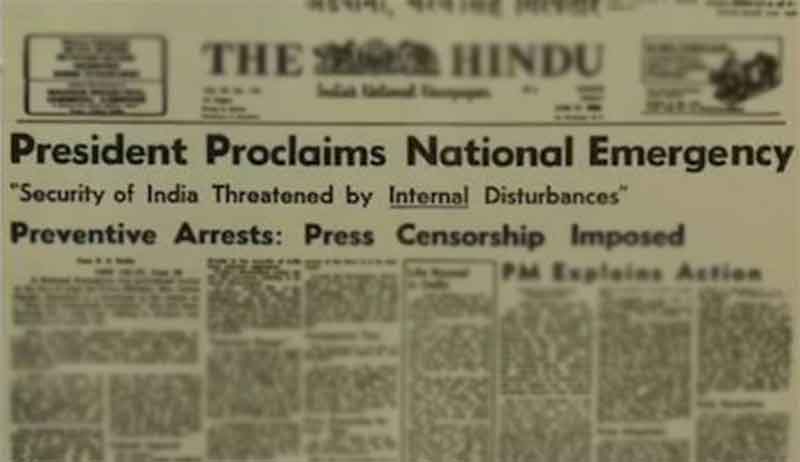
Emergency was proclaimed on June 26, 1975, a consequence of the Sinha verdict. Threat to the political post to the PM was regarded as a threat to “ security of India”.
One lakh people were detained, and scores killed in encounters. A “Pre-censorship” of media was imposed whereby the materials needed to be shown to authorities BEFORE their publication for approval. Even quotes from Tagore and Nehru were axed.
Modi-led BJP is fond of recalling ‘Congress’ fascist dictatorship,’ only to emulate and use it in ever new ways.
We shall briefly recall some of the related events that led to the Emergency:
On 1975 June 24, a vacation bench of the Supreme Court allowed a partial stay of the Sinha judgment after Indira Gandhi had appealed against the High Court verdict.
The Supreme Court’s interim order passed by vacation judge, Justice VR Krishna Iyer, said that she could continue as Member of Parliament (MP) in the Lok Sabha and could attend the House, but could not vote as MP : Her brute majority never needed a vote. She also could not draw any remuneration as an MP.
Significantly, the Top court allowed her to continue as Prime Minister and allowed her to speak and participate in the proceedings of the House and to draw salary in her capacity as Prime Minister.
The Supreme Court later upheld the Emergency, and said the Fundamental Rights to life and liberty are suspended under such emergency. So vulnerable and fragile they were. That is part of the “Constitutional autocracy” India is endowed with, as DV Rao (1917-1984), veteran communist revolutionary with a great insight and foresight, told a special court in 1971 itself, years before the emergency. Draconian laws and practices became the order of the day, they got more acute, ever since.
The considerate order by Justice by Krishna Iyer did not satisfy her. She wanted a blanket stay on the Allahabad High Court judgment. Since the Supreme Court did not grant her that, National Emergency was proclaimed the very next day, June 25-26 late night.
And that autocracy continues till date, in modified forms. Modi relishes and enjoys all that.
Now the rulers can have the cake of ‘democracy’ and eat the people’s rights too.
*** ***
Indira had no match until Modi arrived as PM with his own brand of ‘fascist dictatorship’
Typically, there was no prior Cabinet decision on Emergency. It was proclaimed mid-night, and a subservient President signed it readily, no questions asked. The then Home Minister K. Brahmananda Reddy was not even consulted, before the cabinet meeting the next morning. Modi emulates Indira Gandhi.
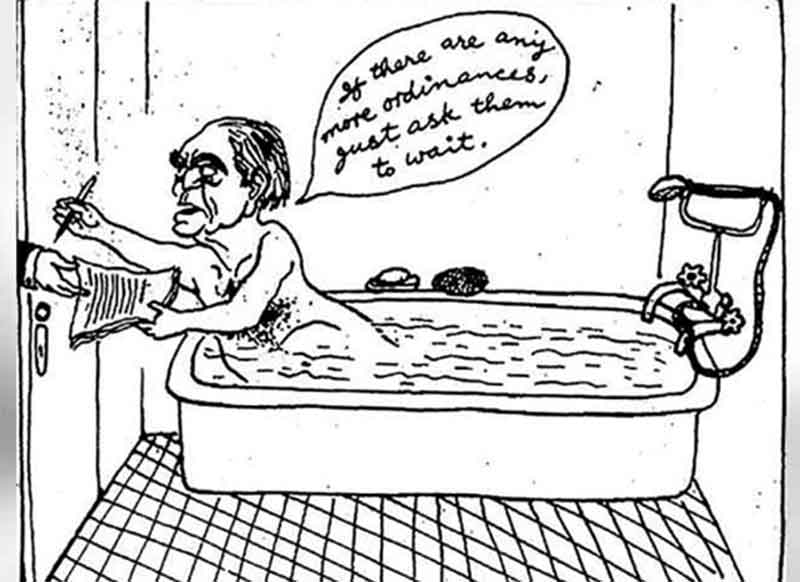
Abu Abraham’s classic cartoon on Emergency era. Indira had no match until Modi arrived as PM with his own brand of ‘fascist dictatorship’. If Indira had a minority community man, Fakhruddin Ali Ahmed as a pliable President, Modi brought in many, including SCs and STs.
If Indira desired and had a “committed judiciary”, Modi played his games with Collegium System for Appointment of Constitutional courts. He found ways to avoid Supreme Court’s role in constituting a pliable Election Commission. He institutionalized political corruption through Election Bonds, though that was only the tip of the iceberg.
He never discussed and decided in the cabinet, crucial things like farmers’ Bills, or Demonetization, or covid-lockdown; nor the withdrawal of such measures.
Indira Gandhi was defeated in 1977 polls by a rag-tag,post-poll coalition that formed into Janata party. Going by that past experience, India’s rulers thereafter, Modi in particular, resorted to an undeclared Emergency, and ever new ways of strangulating the media, subtle as well as brazen.
Modi perfected all that, and India was aptly named an “electoral autocracy” by some agencies. He sought to have his way with 370 plus (400 plus for NDA) seats. But ,alas, he failed to get majority for BJP, i.e., met defeat like Indira. Wiser by her experience, he stitched up pre-poll alliances with equally corrupt and opportunist friends that fell apart, like Naidu and Nitish,and saved himself.
*** ***
It was a “judgment of great courage,”
said the former Chief Justice of India N V Ramana on September 12, 2021:
“In 1975, it was Justice Jagmohanlal Sinha from the Allahabad High Court who passed the judgment that shook the nation, when he disqualified Smt. Indira Gandhi… It was a judgment of great courage, which could be said to have directly resulted in the declaration of Emergency, the consequences of which I do not want to elaborate now.”
https://indianexpress.com/article/india/allahabad-hc-indira-gandhi-cji-nv-ramana-7503096
Bishwajit Bhattacharyya, senior advocate, Supreme Court of India, and former additional solicitor general of India, commented:
“ He (CJI Ramana) is right, of course, but the fact that he needed to say this strikes me as significant. After all, a judge is required to uphold the Constitution and the laws of the land without fear, favour, affection, or ill will. There is no scope for courage. The arms of judges are long enough. Perhaps the CJI’s observations reflect the general malaise that has set in. Day in and day out we are witnessing human rights and civil liberties being abridged in flagrant disregard of the law laid down by the Supreme Court.” (thewire.in, 14/Sep/2021)
The general malaise, one may add, involves the top court itself, despite a few recent judgments, rather exceptions, as evidenced by continued imprisonment of, and denial of bail to, several top intellectuals in a case where FIR was not filed even after four years, as observed by the Court. It took the Court four years to say this, and act in a few cases, about which a few Nobel laureates from across the world had raised their voice.
Tens of thousands of innocent people however are languishing in jails for years, nay decades, in similar circumstances. Father Stan Swamy (1937-2021 July 5), an elderly tribal rights activist incapacitated by Parkinson’s disease, had to wait for a couple of weeks before he was allowed by the Apex Court to have a sipper to drink water, and before he died in the prison. Similar was the plight, for years, of wheel-chair bound and badly sick Prof GN Saibaba before he was bailed out.
Subscribe to Our Newsletter
Get the latest CounterCurrents updates delivered straight to your inbox.
Indeed the Court displayed “courage” on a few occasions, even during the tenure of CJI Ramana. The Court is “intelligent”, has a timing-sense, and is political too, as seen in Ayodhya verdict as only one example.
The then Union Law Minister Kiren Rijiju, who also addressed the meet with CJI Ramana, reportedly said the government wants to have “sweet relations” with the CJI besides current and retired judges of the Supreme Court and High Courts. Though not fully true,and despite bitter wrangles, he conveyed the point of (desire for) “sweet relations” between the Executive and the judiciary. Just as they had with the EC. Rijuju, known for his acerbic remarks about and tiffs with judges, is wiser now.
He is rewarded latest with a cabinet post, perhaps for his fore-sight: sweet relations are useful; they may be needed more than ever.
*** ***
(Sources for details of Indira Gandhi case include a Review of the case published on 12 Jun 2021.
*** ***
Ramakrishnan is a political commemorator who contributed to the countercurrents.org.
Read the latest article by the author:
The whole Loksabha election process was highly dubious, with EC’s credibility undermined, and it taints the results (12/06/2024)

